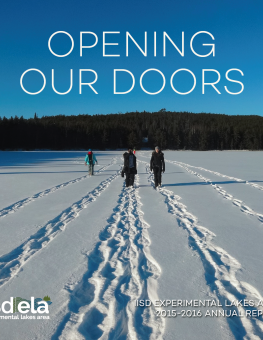
Opening Our Doors: IISD Experimental Lakes Area 2015-2016 Annual Report
2015-2016 was the year that IISD Experimental Lakes Area (IISD-ELA) truly opened its doors to the world.
2015-2016 was the year that IISD Experimental Lakes Area (IISD-ELA) truly opened its doors to the world.
During its second season under IISD management, the facility expanded its research and outreach portfolios, welcoming visitors, communities, professors, students and more, from across Canada and the rest of the world.
This year's annual report is full of updates, facts, statistics and images from our staff, visitors and partners.
Participating experts
You might also be interested in
How can we improve on freshwater health and prevent plastic pollution?
INC-4 is the fourth meeting in a series of international negotiations that aims to develop a global treaty on plastic pollution that could and should have big implications for freshwater quality both in Canada and beyond.
What Is the UAE Framework for Global Climate Resilience, and How Can Countries Move It Forward?
With the introduction of the new framework for the Global Goal on Adaptation (GGA), COP 28 marked a milestone for adaptation. We unpack key outputs and set out how countries can move forward by strengthening their national monitoring, evaluation, and learning (MEL) systems.
India's stance at WTO balances fisheries subsidies for artisanal fishers and sectoral growth
India is likely to advocate for securing the interests of its artisanal fishers while facilitating the growth of the fishing sector at the World Trade Organisation's 13th Ministerial Conference (MC13) in Abu Dhabi later this month. At the MC13, scheduled from February 26 to February 29, world leaders will negotiate on regulating fisheries subsidies that contribute to excessive fishing effort and capacity.
National State of the Environment Report: Uzbekistan
The National State of the Environment Report (NSoER) is a comprehensive document that provides a snapshot of current environmental trends in Uzbekistan's socio-economic development for citizens, experts, and policy-makers in the country of Uzbekistan.